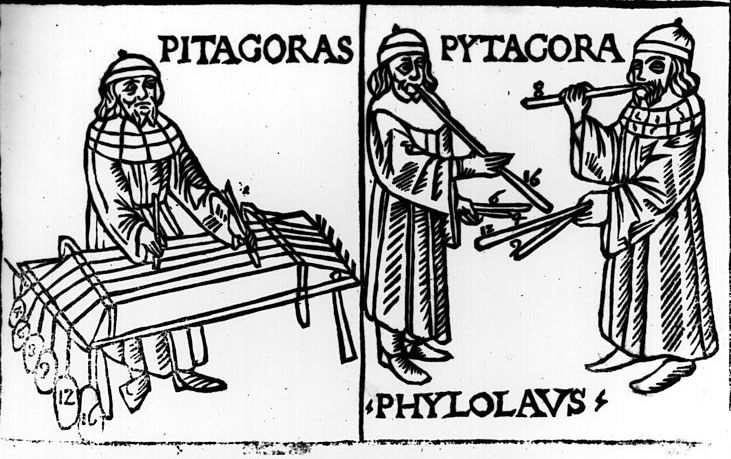The physics department at King’s College London offers a module called ‘Gender Action’. Students studying this module go into schools and nurseries to work on projects related to the elimination of gender stereotypes. The course is run in association with a charity, also called Gender Action, who explain on their website that the problem with phrases such as ‘boys will be boys’ is that they imply ‘a person’s biological sex is fixed.’ A study which is required reading for one week of the course explains how ‘the most propitious means for dismantling patriarchal language’ is to modify discourse ‘to consider sexual difference as contiguous, rather than hierarchical.’ Anecdotally, the course is disproportionately popular with non-binary students. The Institute of Physics is one of the founding partners of Gender Action.
Gender Action is one example of a growing trend to embed a particular idea of ‘social justice’ in our education system, even in science.
Statistical literacy is a prerequisite for understanding society
In my own subject area of mathematics, there is a growing body of literature on ‘critical mathematics pedagogy.’ Marilyn Frankenstein, who coined the term, gives an example lesson where students are asked to ‘Find the total federal subsidy to the nuclear power industry’ and suggests that a ‘powerful way’ to understand the result is asking students to calculate how many years it would take to spend the same amount of money if one spent $1,000 per hour (approximately 100 apparently). She does not explain why the number of hours in a year would provide a more useful scale than, say, the population of the US. Elsewhere books such as Mathematics for Social Justice and websites like RadicalMath are full of ideas for lesson plans about social justice.
On Wednesday, Rishi Sunak announced plans to make learning mathematics compulsory up to the age of 18 in English schools. This may provide an excellent opportunity to turn this trend on its head and use politics courses as a means of teaching about maths instead of using maths for political indoctrination.
Statistical literacy is a prerequisite for understanding society. Seeing through trickery, such as the comparison above linking federal budgets to hours in the year, requires sophisticated mathematical expertise. In our post-truth society, the ability to fact-check the dubious claims of both the political left and right is an essential skill. In the centre-ground of politics Liberal Democrat bar charts have long been famous for their graphical sleight of hand. Beyond numeracy, rigorous mathematical reasoning allows scientists, including social scientists, to objectively explore the implications of their models and test their beliefs.
Social science is not the only area of the curriculum which could be enhanced with an injection of mathematics.
The geometry of perspective drawing has always been an essential part of any artist’s toolkit and solid mathematics skills are necessary for architecture. However, digital art has brought visual arts and mathematics closer than ever before. The CGI images of Hollywood blockbusters and immersive gaming combine artistry with advanced mathematical modelling in new ways that are inspiring to students.
Pythagoras knew some of the fascinating links between mathematics and music. The twelfth root of two plays a critical role in tuning pianos. The classical European scale is determined by the linear geometry of pipes and strings; whereas the Gamelan music of Indonesia uses instruments such as gongs to explore different harmonics, giving the music a transcendent quality that has also inspired western musicians such as Debussy.
In sports, anyone who is serious about performance is never far away from a spreadsheet recording and analysing results, training data and biometrics. As a runner, Riegel’s formula provides an essential guide to my pacing on race day.
An appreciation of digital arts and humanities comes naturally to the students entering sixth forms and colleges today. Their imagination has been captured by the latest technologies. How could any aspiring linguist fail to be excited by the astonishing verbal prowess of the latest chatbots? A budding anthropologist would surely be intrigued by the structure of social networks and the next generation of philosophers will want to think deeply about the implications of artificial intelligence.
Our students are digital natives and appreciate the central role of mathematics in digital technologies. Among school students who went on to university in 2016, 30.8 per cent had chosen to study mathematics A level. However, it is an unfortunate consequence of our current A level system, which requires students to choose just a handful of subjects, that students may be forced out of mathematics because of their interests in languages, arts and humanities.
The UK’s A level system is an outlier internationally in requiring such a high degree of specialisation, and results in students cutting themselves off from a large range of educational opportunities at a very young age. Because of this system, we have too many arts and humanities students who lack numeracy skills, too many science and maths students who do not know how to communicate their ideas effectively and too few students with the skills to innovate across disciplines. By embedding skills in mathematics, analytical reading and effective writing throughout the curriculum we might begin the process of ensuring that students have the well-rounded and rigorous education they deserve.
All Rishi Sunak has to do now is recruit and retain enough mathematically literate teachers.






Comments